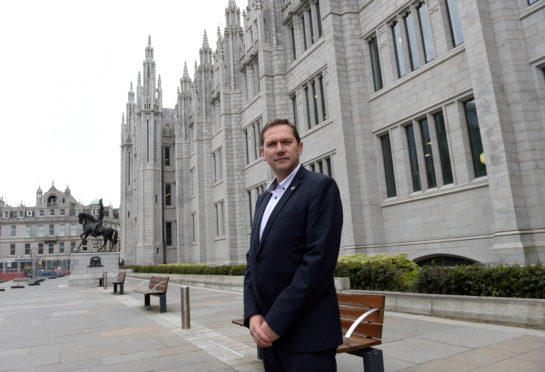Aberdeen City Council’s net debt has risen by £203 million over the last year, according to a report forecasting further squeezing of local authority finances.
Analysis by the public spending watchdog found Aberdeen had the largest net debt increase of any of Scotland’s 32 councils.
The rise in debt run-up by Aberdeen – which is equivalent to a rise of 21% – was three times greater than the next highest councils – East Ayrshire and Dundee which ran-up £67 million and £66 million increases respectively.
The Accounts Commission report said Aberdeen City was paying 10 per cent of its net annual revenue on interest.
The watchdog said Aberdeen’s debt increase was down to short-term borrowing from other local authorities to fund capital investment plus an increase in liabilities on Public Private Partnership (PPP) which fund capital projects.
Underlying borrowing in Aberdeen was 237% of its net annual revenue, the highest percentage in the country.
The Accounts Commission’s “Financial Overview” of Scottish local government found councils are being forced to take cash from their reserves to combat a funding drop of 7.6% in real terms since the 2013-14 financial year.
The report said funding would fall further and noted Moray Council drew down £4 million from its reserves to support its budget.
The report warned that Moray would deplete its general reserve fund of £14 million within five years if it continued to dip into it.
Moray had recognised “this approach to financial management is not sustainable” and funding gaps would need to be funded from as yet unidentified savings, the report said.
Conservative local government spokesman Alexander Stewart said: “Under the SNP, councils are increasingly raiding their rainy-day fund just to keep things going.
“That’s unsustainable and before long these reserves built up over decades will be gone.”
Aberdeen City, along with Clackmannanshire, had the highest funding gap between a council’s total funding and its income, excluding Housing Revenue Account money.
Most councils had a gap of between 2% and 4%, but the gap recorded by Aberdeen and Clackmannanshire was between 6% and 7%.
Aberdeen City Council co-leader Douglas Lumsden, said: “Over 30% of the increase in debt relates to additional money held by the council on behalf of the North East Scotland Pension Fund, which is invested by the council at rates that are beneficial to NESPF members.
“While privately financed capital projects such as Lochside Academy account for over 25% of the figure quoted, the council continued to invest in city infrastructure in accordance with its capital programme using more traditional borrowing arrangements.”
Councillor Lumsden said the council had increased the value of its assets by investing £2.8 billion in the city.










